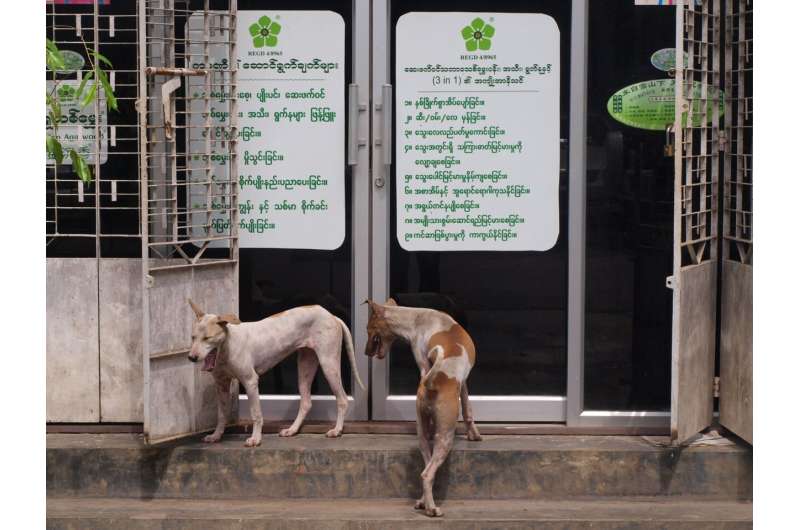This article has been reviewed according to Science X's editorial process and policies. Editors have highlighted the following attributes while ensuring the content's credibility:
fact-checked
peer-reviewed publication
trusted source
proofread
How dogs are used impacts how they are treated, finds cross-cultural database study

Research into the unique cognitive abilities of dogs often leads to surprises, including dogs' ability to form mental representations of things they smell, or that they know when their owners do something by accident. However, dog cognition research suffers from the same biases as general psychology: in both fields, studies are usually done in WEIRD (Western, educated, industrialized, rich, and democratic) societies.
Although nearly everything we know about dog-human bonds, dog behavior, and dog cognition comes from WEIRD societies, the majority of dogs in the world live outside of these conditions. To address this bias and form a better understanding of dog-human relationships in societies around the world, a team of researchers from the MPI of Geoanthropology and the MPI for Evolutionary Anthropology assessed data on the functions and treatment of dogs in 124 globally distributed societies.
The researchers found that, across all societies, dogs' functions are a good predictor of how they are treated by their owners. Analysis showed that the more functions dogs have in a society, such as guarding, herding, or hunting, the closer the dog-human relationship is likely to be.
To conduct the study, the researchers investigated ethnographic data from the eHRAF cross-cultural database and identified societies in which dogs serve any of five main functions: hunting, defense, guarding herds, herding, and carrying or transporting supplies.
They then collected data on how dogs are treated in those societies and coded it into three dimensions: positive care (e.g. dogs are allowed indoors, dogs receive healthcare, puppies are raised), negative treatment (e.g. dogs are not fed, dogs are physically abused, dogs are regularly culled), and personhood (e.g. dogs are named, dogs are buried and/or mourned, dogs are perceived as family members).

By analyzing the relationship between dog functions and treatment, the researchers showed that the number of functions is positively associated with positive care and personhood and negatively associated with negative treatment. However, they also found that not all of a dog's jobs influence treatment equally.
For example, herding is particularly likely to increase positive care, whereas hunting has no impact on positive care or negative treatment, but does increase the odds of personhood. Thus, in societies where dogs are kept for hunting, humans are more likely to name their dogs and perceive them as family members.
Additionally, the study showed that negative treatment and positive care are not mutually exclusive. In fact, of the 77 societies with data for all three dimensions of dog treatment, 32 showed the presence of both positive care and negative treatment. This suggests that the dog-human relationship is not as simple or straightforward as "man's best friend," but involves a complex balance between offering care and minimizing costs.
"Our study adds a systematic test for explaining the cultural drivers that shape the variety of dog-human bonds around the world," says Juliane Bräuer of the Max Planck Institute of Geoanthropology. "This represents a first step into understanding whether the cognitive and social skills associated with dogs are universal or are influenced by the cultural environment the dogs live in."
The researchers hope that future studies will bring greater understanding of the history of dog-human cooperation. For instance, while roughly half of the world's societies keep dogs for only one purpose, the other half make use of them in multiple ways. Why did some societies start employing dogs for multiple purposes? Did such use bring sizeable benefits? And if so, what were they? Answering these questions will reveal in new detail how dogs and humans have affected each other throughout our shared history.
The work is published in the journal Scientific Reports.
More information: Angela M. Chira et al, Function predicts how people treat their dogs in a global sample, Scientific Reports (2023). DOI: 10.1038/s41598-023-31938-5
Journal information: Scientific Reports
Provided by Max Planck Society




















